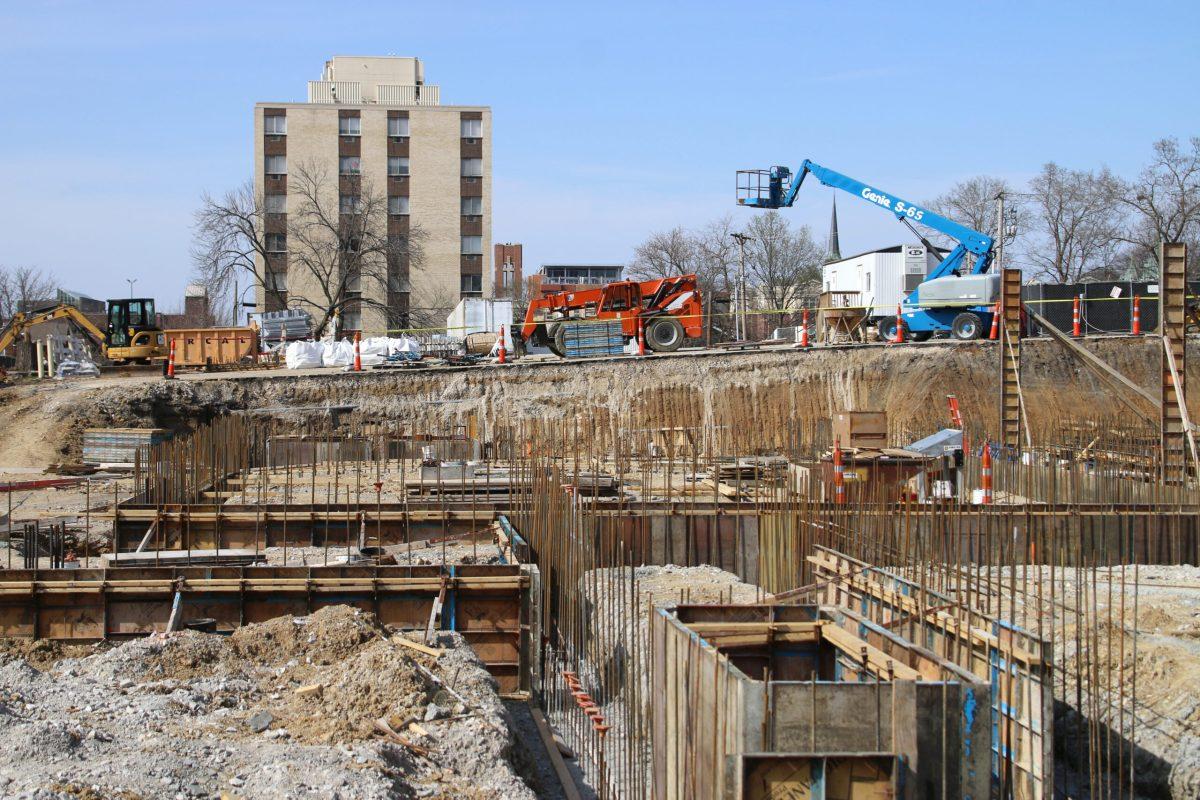
Following the MU School of Music’s centennial celebration April 7-9, ground was broken for the school’s new building that is expected to open August 2019.
Since the founding of the School of Music in 1917, the school’s main building has been moved to three different locations. Currently, the School of Music is split among six different buildings, the main one being the Fine Arts Building on Lowry Mall, throughout campus that are not technologically equipped for the needs of 21st century musicians.
The only problem, however, is not the lack of technology but also the division of the School of Music community.
“To have a music discipline, which by its nature is collaborative, split up all over campus is not conducive to working together, collaborating and making good music together,” School of Music Director Julia Gaines said.
Gaines said that she rarely sees professors except for at staff meetings.
“It’s not a great working environment for either our faculty or our students,” Gaines said.
The new building will allow more regular interaction among peers and colleagues.
Gaines has been the director of the School of Music for four years, but previously, she was the school’s director of percussion studies since 1996. In her 22 years at MU, Gaines said that the university has never had appropriate music rehearsal rooms for large groups.
“It’s important to get our musicians in real spaces,” Gaines said. “It would be like a scientist being in a makeshift lab. How are they supposed to do good research and do a good experiment with inappropriate facilities?”
Currently, large rehearsal groups such as Marching Mizzou, the jazz band and the orchestra use Loeb Hall, which is a renovated cafeteria that sits on the edge of campus, as a rehearsal area.
“It’s not the greatest space,” MU student Greg Johnson said. “In Loeb, there’s a giant pillar in the center of the room that separates the trumpets from the trombones. There are curtains everywhere that eat up all of the sound.”
The new School of Music building will be diagonal to the current Fine Arts Building. It will be more conducive for students who need to practice because they won’t be walking to Loeb, Gaines said.
“The thing that I am most excited for is that I won’t have to walk three quarters of a mile to the new rehearsal area,”Johnson said.
The new building will house large rehearsal spaces, a recital hall which will double as a classroom during the day, faculty offices and more classrooms. The classrooms will be acoustically designed, which is important to the both faculty and students. The building will allow for more learning and practicing to occur simultaneously.
“Teachers have to adjust their teaching schedules so you don’t have a French horn and a vocalist right next to each other because there is too much bleed,” Gaines said. “The vocalist can’t hear her music when the French horn player is playing a symphony. Things have had to be altered.”
Gaines is adamant about making a clear distinction between the quality of the School of Music’s current facilities and its faculty.
“I believe that our faculty offer a quality education right now, even in poor facilities, but I believe it will be enhanced with the new building,” Gaines said. “They have quality education then they’re going to be able to rehearse in a space where they can actually hear each other. It has nothing to do with the quality of the professors.”
The new facilities will only enhance the professors’ abilities, Gaines said.
“The fact that I will finally be able to give them the tools they need to continue teaching excellently is going to be great,” Gaines said.
Even standard components of the current School of Music buildings, such as heat and air conditioning, hinder processes that are typical to musicians such as professional recordings. If the heat turns on in one of the buildings, the musician must restart at a later time when the conditions are suitable.
“It’s more critical in music to capture a live performance for potential grad school applications or YouTube to demonstrate what you can do,” Gaines said. “It takes the faculty a lot of extra work. They have to do more to overcome the inadequacies of the building so that the students can be successful.”
Students who are currently attending the School of Music will have the opportunity to see the transformation of the facilities. Following the completion of construction, students won’t just come to MU for the faculty, they will come to MU for the facilities as well, Gaines said.
_Edited by Morgan Smith | [email protected]_